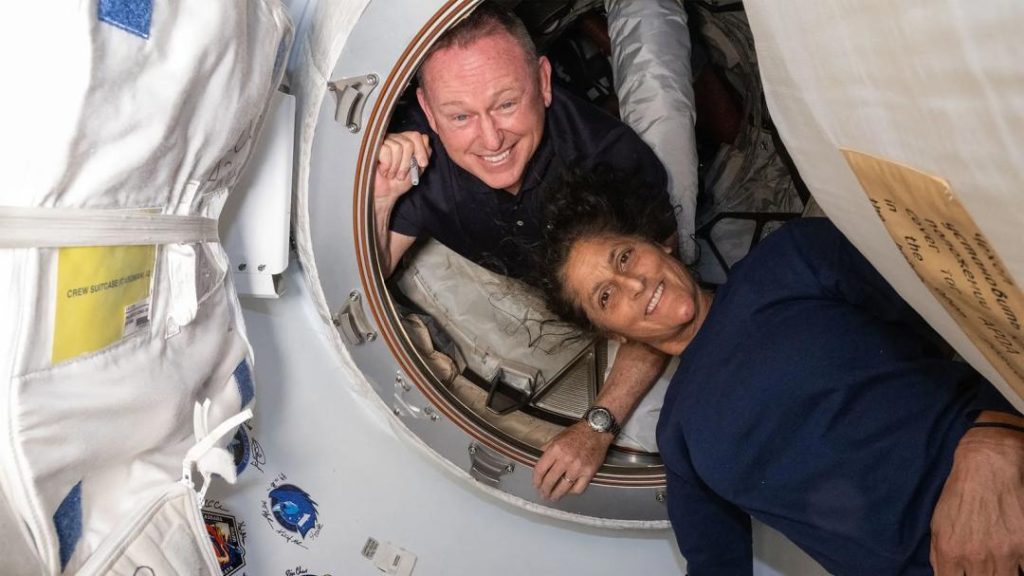
What Challenges Will Sunita Williams & Butch Wilmore Face After Returning to Earth?
Next week, NASA astronauts Sunita Williams and Butch Wilmore will return to Earth after spending months in space. While their journey back to our planet may seem like a welcome homecoming, it’s not without its challenges. In fact, astronauts like Williams and Wilmore face a range of difficulties as they readjust to life on Earth. In this blog post, we’ll explore some of the challenges they may encounter, from “baby feet” to bone density loss.
As astronauts spend extended periods in space, their bodies undergo significant changes. One of the most notable effects is the loss of blood volume. In microgravity, the body doesn’t have to work as hard to pump blood, which can lead to a drop in blood volume. This, in turn, can cause a range of symptoms, including dizziness, nausea, and even fainting.
For Sunita Williams and Butch Wilmore, these symptoms may be particularly pronounced. As they return to Earth’s gravity, their bodies will have to readjust to the increased blood pressure and circulation. This can be a challenging process, especially if they don’t take steps to mitigate the effects of microgravity.
Another challenge astronauts face is the loss of bone density. In space, the lack of gravity means that bones don’t have to work as hard to support the body’s weight. As a result, the bones can lose mass and density. This can lead to a range of health problems, including osteoporosis and an increased risk of fractures.
To counteract this loss of bone density, astronauts like Williams and Wilmore will have to engage in regular exercise and physical activity. This can include activities like yoga, stretching, and weightlifting. By strengthening their bones and muscles, they can help to mitigate the effects of microgravity and reduce their risk of injury or illness.
But bone density loss is just one of the challenges astronauts face on their return to Earth. Another, more unusual effect of space travel is the development of “baby feet.” This phenomenon occurs because the muscles in the feet and ankles don’t get the same kind of exercise in space as they do on Earth. As a result, the muscles can become weakened and the feet can take on a more rounded, “baby-like” shape.
For Sunita Williams and Butch Wilmore, this can be a frustrating and uncomfortable experience. The good news is that it’s a temporary condition, and with regular exercise and physical activity, the muscles in their feet and ankles can regain their strength and normal shape.
In addition to these physical challenges, astronauts like Williams and Wilmore may also face mental and emotional challenges on their return to Earth. The experience of space travel can be intense and isolating, and the transition back to life on Earth can be difficult.
To help mitigate these challenges, NASA provides support and counseling services to astronauts before, during, and after their missions. These services can help astronauts adjust to the changes they experience during space travel and provide them with the tools they need to thrive on their return to Earth.
In conclusion, the return to Earth for astronauts like Sunita Williams and Butch Wilmore is not without its challenges. From the loss of blood volume and bone density to the development of “baby feet,” they will face a range of difficulties as they readjust to life on our planet.
However, with the right support and care, astronauts can overcome these challenges and thrive on their return to Earth. By engaging in regular exercise and physical activity, they can help to mitigate the effects of microgravity and regain their strength and mobility. And with the support of NASA’s counseling services, they can also address any mental or emotional challenges they may face.
As we look forward to the return of Sunita Williams and Butch Wilmore to Earth, we can appreciate the incredible challenges they have faced during their time in space. And we can also acknowledge the importance of the work they have done, from conducting scientific experiments to inspiring future generations of astronauts.






